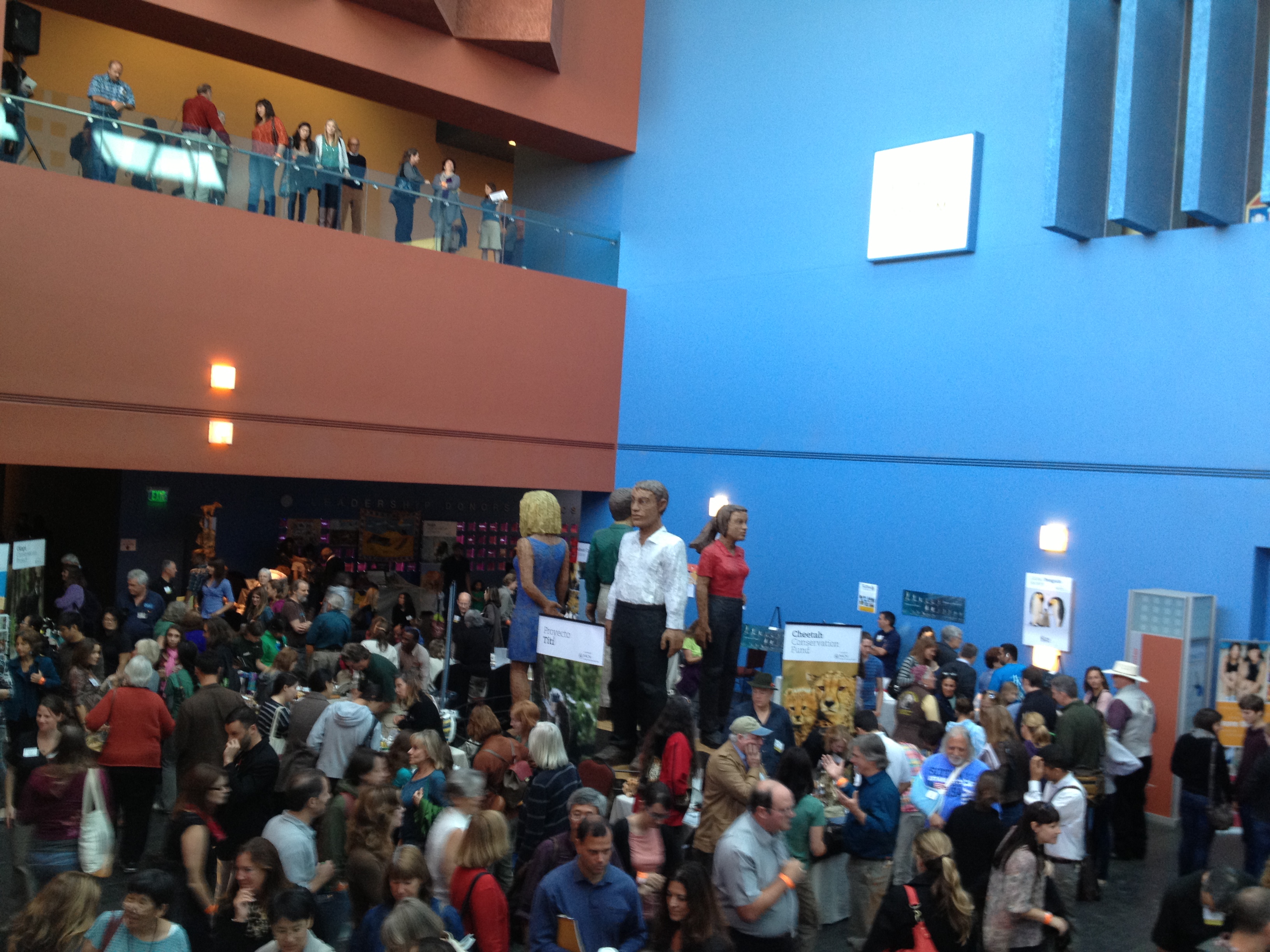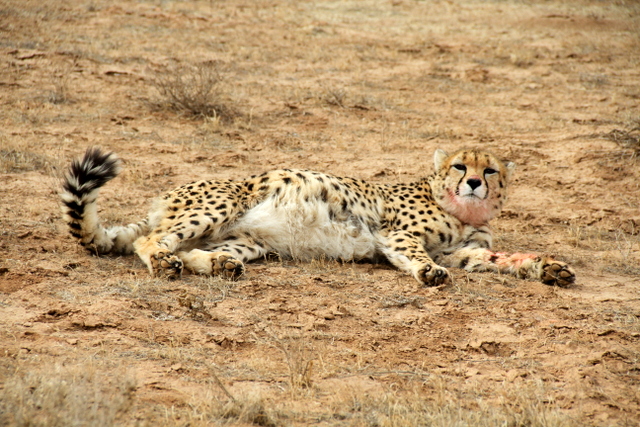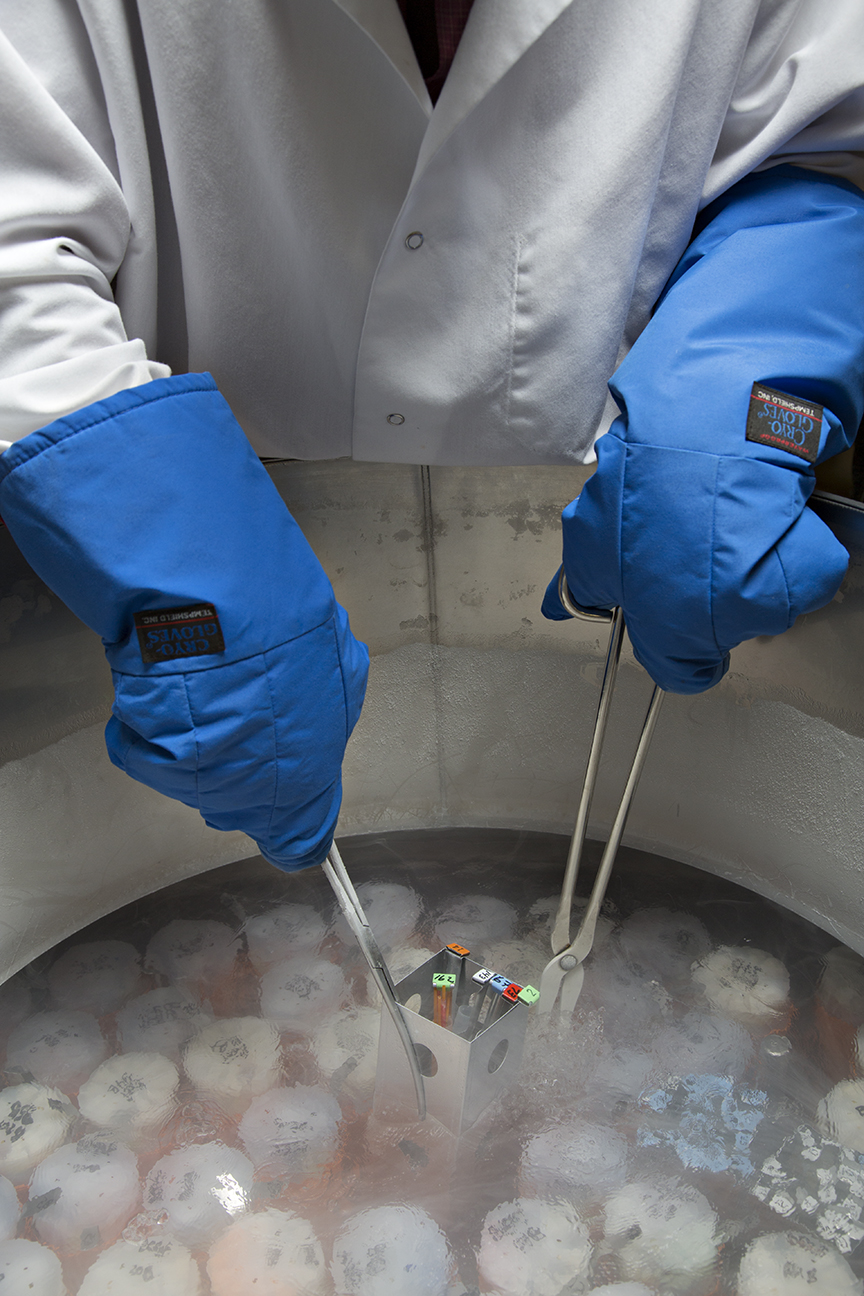|
Cheetah Conservation Fund
The Cheetah Conservation Fund is a research and lobby institution in Namibia concerned with the study and sustenance of the country's cheetah population, the largest and healthiest in the world. Its Research and Education Centre is located east of Otjiwarongo. The CCF was founded in 1990 by conservation biologist Laurie Marker who won the 2010 Tyler Prize for her efforts in Namibia. Activities Loss of habitat, conflict with humans,Marker, Laurie L. Aspects of Cheetah (Acinonyx jubatus) Biology, Ecology, and Conservation Strategies on Namibian Farmlands'', thesis submitted for Doctor of Philosophy, Lady Margaret Hall, University of Oxford, Trinity Term 2002. as well as its own loss of genetic variation, are the main threats facing the cheetah today. Both within Namibia and worldwide there is now far greater awareness of the value of the cheetah within the ecosystem, and its endangered status. Encouragingly, increasing numbers of Namibian farmers (on whose land the majority of wi ... [...More Info...] [...Related Items...] OR: [Wikipedia] [Google] [Baidu] |
CCF Field And Research Centre
CCF can refer to: Computing * Confidential Consortium Framework, a free and open source blockchain infrastructure framework developed by Microsoft * Customer Care Framework, a Microsoft product Finance * Credit conversion factor converts the amount of a free credit line and other off-balance-sheet transactions to its credit exposure equivalent, i.e. an Exposure at default * Common contractual fund, an Irish collective investment scheme * Crédit Commercial de France, a defunct French bank, now part of HSBC Health care * Congestive cardiac failure Organisations * Cambodian Children's Fund, a charity organisation * Center for Consumer Freedom, a food industry advocacy group * Cheetah Conservation Fund, a Namibian wildlife conservation organization * China Carbon Forum, a non-profit organization promoting climate change stakeholder dialogue * China Computer Federation, Chinese association for computing professionals * Combined Cadet Force, British-government sponsored organisatio ... [...More Info...] [...Related Items...] OR: [Wikipedia] [Google] [Baidu] |
CCF Cheetah
CCF can refer to: Computing * Confidential Consortium Framework, a free and open source blockchain infrastructure framework developed by Microsoft * Customer Care Framework, a Microsoft product Finance * Credit conversion factor converts the amount of a free credit line and other off-balance-sheet transactions to its credit exposure equivalent, i.e. an Exposure at default * Common contractual fund, an Irish collective investment scheme * Crédit Commercial de France, a defunct French bank, now part of HSBC Health care * Congestive cardiac failure Organisations * Cambodian Children's Fund, a charity organisation * Center for Consumer Freedom, a food industry advocacy group * Cheetah Conservation Fund, a Namibian wildlife conservation organization * China Carbon Forum, a non-profit organization promoting climate change stakeholder dialogue * China Computer Federation, Chinese association for computing professionals * Combined Cadet Force, British-government sponsored organisatio ... [...More Info...] [...Related Items...] OR: [Wikipedia] [Google] [Baidu] |
Cat Conservation Organizations
The cat (''Felis catus'') is a domestic species of small carnivorous mammal. It is the only domesticated species in the family Felidae and is commonly referred to as the domestic cat or house cat to distinguish it from the wild members of the family. Cats are commonly kept as house pets but can also be farm cats or feral cats; the feral cat ranges freely and avoids human contact. Domestic cats are valued by humans for companionship and their ability to kill rodents. About 60 cat breeds are recognized by various cat registries. The cat is similar in anatomy to the other felid species: they have a strong flexible body, quick reflexes, sharp teeth, and retractable claws adapted to killing small prey. Their night vision and sense of smell are well developed. Cat communication includes vocalizations like meowing, purring, trilling, hissing, growling, and grunting as well as cat-specific body language. Although the cat is a social species, they are a solitary hunter. As a preda ... [...More Info...] [...Related Items...] OR: [Wikipedia] [Google] [Baidu] |
African Wildlife Foundation
The African Wildlife Foundation (AWF) is the leading international conservation organization focused exclusively on Africa's wildlife and wild lands. AWF's programs and conservation strategies are designed to protect the wildlife and wild lands of Africa and ensure a more sustainable future for Africa's people. AWF protects Africa's wildlife, its wild lands, and its natural resources. Since its inception in 1961, the organization has protected endangered species and land, promoted conservation enterprises that benefit local African communities, and trained hundreds of African nationals in conservation. Early years The African Wildlife Leadership Foundation (AWLF) was founded in 1961 by Russell E. Train, a wealthy judge and hunter, and member of the Washington Safari Club. Other founding members from the Safari Club were Nick Arundel, a former United States Marine Corps combat officer and journalist; Kermit Roosevelt Jr. of the CIA; James S. Bugg, a businessman; and Maurice St ... [...More Info...] [...Related Items...] OR: [Wikipedia] [Google] [Baidu] |
Wildlife Conservation Network
The Wildlife Conservation Network (WCN) is a United States-based 501(c)(3) non-profit organization that protects endangered wildlife by supporting conservationists in the field who promote coexistence between wildlife and people. WCN does this by providing its partners with capital, strategic capacity-building services, training, and operational support. WCN has been given a top rating amongst wildlife conservation charities, with a four star rating on Charity Navigator. Founded in 2002, Wildlife Conservation Network was built on a venture capital fundraising model to identify entrepreneurial conservationists and projects and give them the support they need to effectively run their programs. WCN brings donors together with field conservationists to develop personal relationships and allow donors to see how their support is making an impact for wildlife. WCN’s 100% donation model means every dollar donated to a specific species is guaranteed to go to the conservationists who prote ... [...More Info...] [...Related Items...] OR: [Wikipedia] [Google] [Baidu] |
Cheetah Conservation Foundation
The Cheetah Preservation Foundation is a conservation organisation set up in South Africa in 1993 with special dedication to the protection of the vulnerable South African cheetah. It is one of the largest wildlife organisations in Africa. The foundation has set up a number of programmes throughout South Africa such as the Cango Wildlife Ranch near the town of Oudtshoorn. See also * Cheetah * Asiatic cheetah * Cheetah Conservation Fund * African Wildlife Foundation The African Wildlife Foundation (AWF) is the leading international conservation organization focused exclusively on Africa's wildlife and wild lands. AWF's programs and conservation strategies are designed to protect the wildlife and wild lands of ... External linksCheetah Preservation Foundation official website* US Fish & Wildlife ServiceThreatened and Endangered Species System (TESS) [...More Info...] [...Related Items...] OR: [Wikipedia] [Google] [Baidu] |
Anatolian Shepherd Dog
The Kangal Shepherd Dog (Turkish: ''Kangal Çoban Köpeği'') is a historic Turkish breed of large livestock guardian dog native to eastern Turkey. The breed name derives from that of the town and district of Kangal in Sivas Province, the easternmost province of the Central Anatolia Region. The coat colour varies from pale fawn to wolf grey, always with a black mask. It is a traditional flock guardian dog, kept with flocks of sheep to fend off predators of all sizes, including wolves, bears and jackals. It is thought to have the most powerful bite of all domestic dogs. Some have been exported to African countries such as Namibia and Kenya where they successfully protect local herds from lions, cheetahs and similar indigenous big cats. In the United States, the name Anatolian Shepherd Dog is used to describe dogs descended from various Turkish livestock guardian dogs, particularly the Kangal but also the Akbash. While the American Kennel Club considers the two breeds identi ... [...More Info...] [...Related Items...] OR: [Wikipedia] [Google] [Baidu] |
Asiatic Cheetah
The Asiatic cheetah (''Acinonyx jubatus venaticus'') is a critically endangered cheetah subspecies currently only surviving in Iran. It once occurred from the Arabian Peninsula and the Near East to the Caspian region, Transcaucasus, Kyzylkum Desert and northern South Asia, but was extirpated in these regions during the 20th century. The Asiatic cheetah diverged from the cheetah population in Africa between 32,000 and 67,000 years ago. The Asiatic cheetah survives in protected areas in the eastern-central arid region of Iran, where the human population density is very low. Between December 2011 and November 2013, 84 individuals were sighted in 14 different protected areas, and 82 individuals were identified from camera trap photographs. In December 2017, fewer than 50 individuals were thought to be remaining in three subpopulations that are scattered over in Iran's central plateau. As of January 2022, the Iranian Department of Environment estimates that only 12 Asiatic cheet ... [...More Info...] [...Related Items...] OR: [Wikipedia] [Google] [Baidu] |
South African Cheetah
The Southeast African cheetah (''Acinonyx jubatus jubatus'') is the nominate cheetah subspecies native to East and Southern Africa. The Southern African cheetah lives mainly in the lowland areas and deserts of the Kalahari, the savannahs of Okavango Delta, and the grasslands of the Transvaal region in South Africa. In Namibia, cheetahs are mostly found in farmlands. Taxonomy The Southern African cheetah was first described by German naturalist Johann Christian Daniel von Schreber in his book ''Die Säugethiere in Abbildungen nach der Natur mit Beschreibungen'' (''The Mammals illustrated as in Nature with Descriptions''), published in 1775. Schreber described the species on basis of a specimen from the Cape of Good Hope. It is therefore the nominate subspecies. Subpopulations have been called "South African cheetah" and "Namibian cheetah." Following Schreber's description, other naturalists and zoologists also described cheetah specimens from many parts of Southern and East A ... [...More Info...] [...Related Items...] OR: [Wikipedia] [Google] [Baidu] |
Allele Frequency
Allele frequency, or gene frequency, is the relative frequency of an allele (variant of a gene) at a particular locus in a population, expressed as a fraction or percentage. Specifically, it is the fraction of all chromosomes in the population that carry that allele over the total population or sample size. Microevolution is the change in allele frequencies that occurs over time within a population. Given the following: # A particular locus on a chromosome and a given allele at that locus # A population of ''N'' individuals with ploidy ''n'', i.e. an individual carries ''n'' copies of each chromosome in their somatic cells (e.g. two chromosomes in the cells of diploid species) # The allele exists in ''i'' chromosomes in the population then the allele frequency is the fraction of all the occurrences ''i'' of that allele and the total number of chromosome copies across the population, ''i''/(''nN''). The allele frequency is distinct from the genotype frequency, although they are ... [...More Info...] [...Related Items...] OR: [Wikipedia] [Google] [Baidu] |
Gene Flow
In population genetics, gene flow (also known as gene migration or geneflow and allele flow) is the transfer of genetic material from one population to another. If the rate of gene flow is high enough, then two populations will have equivalent allele frequencies and therefore can be considered a single effective population. It has been shown that it takes only "one migrant per generation" to prevent populations from diverging due to drift. Populations can diverge due to selection even when they are exchanging alleles, if the selection pressure is strong enough. Gene flow is an important mechanism for transferring genetic diversity among populations. Migrants change the distribution of genetic diversity among populations, by modifying allele frequencies (the proportion of members carrying a particular variant of a gene). High rates of gene flow can reduce the genetic differentiation between the two groups, increasing homogeneity. For this reason, gene flow has been thought to con ... [...More Info...] [...Related Items...] OR: [Wikipedia] [Google] [Baidu] |
Cryopreservation
Cryo-preservation or cryo-conservation is a process where Organism, organisms, organelles, cell (biology), cells, Biological tissue, tissues, extracellular matrix, Organ (anatomy), organs, or any other biological constructs susceptible to damage caused by unregulated chemical kinetics are preserved by cooling to very low temperatures (typically using solid carbon dioxide or using liquid nitrogen). At low enough temperatures, any Enzyme, enzymatic or chemical activity which might cause damage to the biological material in question is effectively stopped. Cryopreservation methods seek to reach low temperatures without causing additional damage caused by the formation of ice crystals during freezing. Traditional cryopreservation has relied on coating the material to be frozen with a class of molecules termed cryoprotectants. New methods are being investigated due to the inherent toxicity of many cryoprotectants. Cryoconservation of animal genetic resources is done with the intentio ... [...More Info...] [...Related Items...] OR: [Wikipedia] [Google] [Baidu] |







